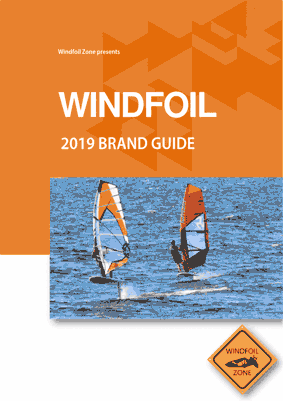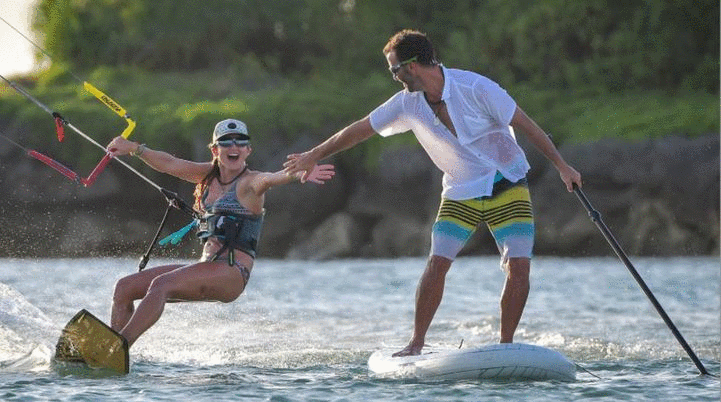5 steps to choose the right windsurf-foil for beginners
- Markus Hetzmannseder
- Jun 1, 2019
- 4 min read

Today let's get som piece and advice from an expert. Markus Hetzmannseder is running the windfurf foil school Foil windsurf center in Austria and he is also a brand ambassador for the Slingshot company.
In today's article, he gives us his best tips to get the right foil for beginners.
Check it out!
As a passionate foil windsurfer, owner of the first mobile foil windsurf school in Austria and windsurf foil instructor, I want to guide you through the growing windfoiling material jungle by showing you how easy it is to get up and flying with the right gear in 5 steps.
Why is 2019 a perfect year to start with windsurf foiling?
First off the technology is here and you have the opportunity to choose from around 30 windfoil-manufacturers.
A list of all windfoil manufacturers is available in the Windfoil Brand Guide E-book, with comparisons and tests of the different products.
My 5 steps guide through this product jungle will lead you confidently towards a good decision!
After all, the final target is, that you are flying within the first days thanks to the well-chosen products. You will have fun from the very first day and you will see huge progress in your windsurf foiling skills!

1- ASK
Let´s start with the very first step, ask yourself the following questions:
What is your weight?
Where will you learn to fly?
How are the wind conditions there?
How deep is the water?
What is your windsurf skill level?
What are your ambitions? Just freeriding and cruising or freestyling or speed and race foiling?
Depending on the answers, you will be able to choose out of different mast length and foil sizes to accomplish your goals.

2- COMPARE
In step two, compare different windsurf foiling systems and manufacturers. Compare materials, such as aluminium or aluminium-carbon and carbon windsurf foils. It is not only a matter of price but also of extending options in order to progress in your skills. Are there other wing options for a particular foil platform? Can you change fuselage length.
3- START SLOWLY
In step three I recommend beginners to start with a very big sized and slow front wing and a short mast. Why?
Because it is so important to have fun and success from the very first time foiling. You should be able to take off and come out of the water within the first 30 minutes foiling.

This choice of foil will help you in that mission! Once you get the feeling of flying you will not want to stop! A big front wing, with approx.. 1500 cm² will allow you to start flying at low speed.
And once you master basic foiling, a big wing will allow you to keep foiling through more advanced manoeuvres thanks to the low stall speed of the bigger wings!
With that a bigger wing, you will gain in confidence and you learn quickly which will keep windfoiling exciting!

And why do I recommend starting with a shorter mast?
At the beginning, you will over-foil. That means, that once you are flying, the front wing comes out of the water and you fall down with the board, splash, hitting the water surface. The shorter the mast, the easier it is for a beginner to handle the crash back onto the water surface and to maintain balance during the lift.
It's highly recommended to get a nose board protector when you start foiling, as it's really common to get catapulted at the beginning. Read our best tips about nose board protectors.
4- PROGRESS
In step four, you are flying long distances and maybe you want to go for a faster wing and/ or for a longer mast in order to intensify your flying experience. If you want to learn manoeuvres such as Foil-jibe, Duck Jibe, Upwind 360, Carving 360, etc. I recommend staying with the big wing, but with a longer mast to keep progressing and learning while having fun!
5- FLY
In step five, you just fly and do tricks with a faster front wing and a longer mast, enjoying the incredible feeling of flying over the water.
Finally, here are two examples to guide you towards the right set-up. All examples are based on the Slingshot range, which is the brand I know the best.
Marc, 80 kg, beginner:
Marc, 80 kg, wants to foil on a thermic spot, with light wind of 10-22 km/h (6-12knt). He has never foiled before.
My recommendation for him would be to start with the 2019 Hover Glide FWind system composed of the 76cm Infinity Carbon (1500cm²) front wing. Mast length for the first days should be 61 cm and later on 90 cm.
This system works great in combination with the following sails: 5,9 cm² or 5,4 cm² (for example GA IQ).
John, 110 kg, beginner:
John, 110 kg, wants to foil on the same thermic spot as Marc, with light wind of 10-22 km/h (6-12knt). It’s his first time foiling as well.
My recommendation for John would also be to start with the 2019 Hover Glide FWind system, but use the 84cm Infinity Carbon (2000cm²) front wing. John is heavier than Marc and needs more lift. Mast length for the first days should also be 61 cm and later on 90 cm.
This system will work great with bigger sails: 6,5 cm² or 7,8 cm² (for example GA IQ).
Conclusion
At the beginning, it is important to choose a system with a slow and big front wing (at least 1500cm²) and preferably two mast lengths!
It is all about having quick success in flying, having fun and feel the great feeling of freedom when windsurf foiling!
Have fun on the water!
Markus Hetzmannseder









Comments